You’re in the finals of the biggest tournament in which you have ever participated. The score is tied with thirty seconds left. You find yourself stuck in closed guard on the top. Suddenly you get swept, giving up two points and the match. Afterward you review the film and notice you were swept because you had poor posture in the guard. Posture is the key to maintaining your base in the guard, yet few Brazilian jiu jitsu athletes take the time to work on their posture. Hours are spent learning techniques, drilling, and sparring. Hardly anyone is working on proper spine mechanics.
The vertebral column is made up of three segments: the cervical, thoracic, and lumbar spine. Each section has a specific purpose, however they all must work together to maintain posture. For Brazilian jiu jitsu (and good health) every inch of the spine is important. Often people focus on the cervical and lumbar region, and the thoracic region gets overlooked even though it takes a large amount of punishment. Stiffness in the thoracic spine can be caused by sitting, working on a computer, and driving with poor posture – then throw Brazilian jiu jitsu in the mix, where your neck is being grabbed and bent in strange ways and your shoulders are in a forward and rounded position most of the time. This is not only bad for your body, it is bad for your Brazilian jiu jitsu.
The Function of the Thoracic Spine
The thoracic spine is made up of the middle twelve vertebrae. Each vertebra serves as an attachment for the ribs. The shape of the thoracic spine is kyphotic, which means it forms a “C” shape. Possible movements of the thoracic spine include flexion, extension, and rotation. The ribs and shoulders must work together with the thoracic spine for proper movement, as the body works in systems.
Gray Cook, the founder of Functional Movement Systems, talks about a joint-by-joint approach when it comes to the body. Every joint in the body has a purpose. Some joints are designed for stability, while others are designed for mobility. When a joint is forced, injured, or restricted, it will affect the joints above and below it. Mobility and stability are organized in the body in an every-other joint fashion. The ankles need mobility, the knees require stability, hips need mobility, lumbar spine needs stability, thoracic spine needs mobility, scapula needs stability, and the gleno-humeral joint needs mobility.
The thoracic spine has a tendency towards stiffness. Poor posture is the main cause of this. When the thoracic spine becomes stiff, the areas above and below are affected. When the thoracic spine is restricted, the scapula (shoulder blade) is placed in a compromised position. A scapula in a compromised position affects the rotator cuff. If you looked at your shoulder pain as just shoulder pain you may focus only on shoulder correctives. You may never work on your thoracic spine and will wonder why your shoulder pain is not going away.
How Does This Affect My Brazilian Jiu Jitsu?
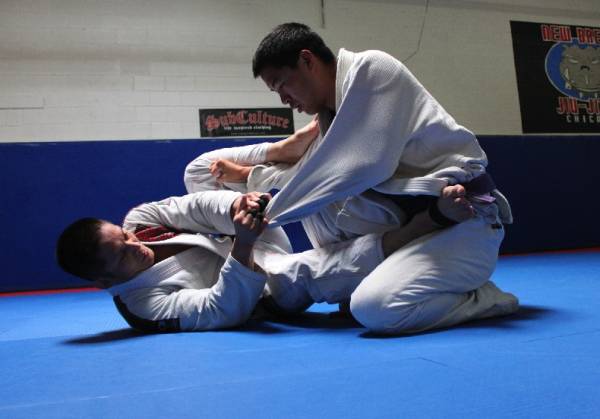 Ever watch a Brazilian jiu jitsu tournament and hear someone’s coach yelling “posture”? There is good reason for this. Poor posture will get you swept. Poor posture will get you caught in triangles. Improving your posture will improve your jiu jitsu. When playing in the top guard position, proper posture is required to open your opponent’s guard. If your shoulders are rounded forward, then your opponent’s task of breaking your posture becomes easier. Placing the body in a mechanically stable position makes you stronger. Put the pieces where they should be and things work better. The goal is to be efficient. When your body is working the way it should, then you have to use less effort to maintain posture. Try triangling someone with good posture.
Ever watch a Brazilian jiu jitsu tournament and hear someone’s coach yelling “posture”? There is good reason for this. Poor posture will get you swept. Poor posture will get you caught in triangles. Improving your posture will improve your jiu jitsu. When playing in the top guard position, proper posture is required to open your opponent’s guard. If your shoulders are rounded forward, then your opponent’s task of breaking your posture becomes easier. Placing the body in a mechanically stable position makes you stronger. Put the pieces where they should be and things work better. The goal is to be efficient. When your body is working the way it should, then you have to use less effort to maintain posture. Try triangling someone with good posture.
How to Spot Poor Posture and the Ways to Correct It
If you do Brazilian jiu jitsu the chances are high that you need corrective work for your thoracic spine. For a quick test, start with your feet shoulder width apart and toes pointed forward. Place a PVC pipe on top of your head. Line up your hands so your elbows are at ninety degrees. Press the PVC over your head. Maintaining the PVC over your head and feet, squat down as far as you can. If the PVC moves forward in front of your head or you are unable to squat down to parallel, the odds are good you have some thoracic spine restriction.
Corrective work needs to be done everyday. In Dr. Kelly Starret’s book, Becoming a Supple Leopard, he says, “When it comes to mobility there are no off days.” To make change in the affected tissues consistent work must be done. It doesn’t have to take a lot of time. Fifteen minutes a day is enough.
Sample Thoracic Spine Mobility Routine
To perform this mobility routine you will need two lacrosse balls taped together, a foam roller, and a bench.
Lacrosse ball smash for 5 minutes:
- Place lacrosse balls at the start of your thoracic spine (the area just below your neck).
- Fold your arms across your body (give your self a big hug!).
- Start to bridge over the balls holding for a second then returning to the starting position.
- Spend some time at each segment working down your back until you reach your lumbar spine.
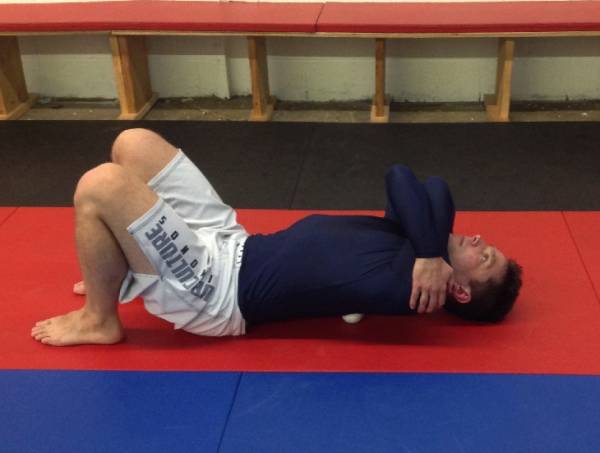
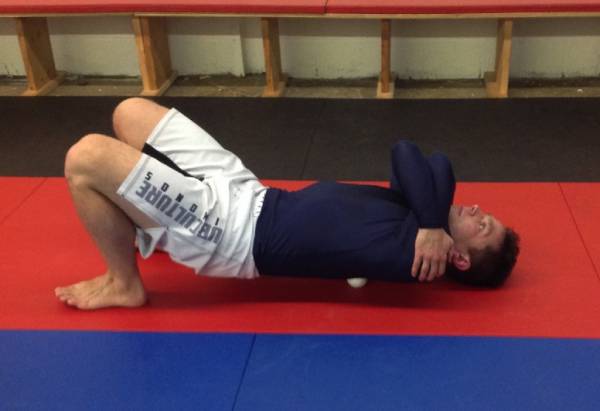
Batwings, 3 sets of 5 repetitions:
- Lay face down on a bench and extend your arms in front of you.
- Grab two small weights off the ground or no weight if just starting out.
- Row the weight so your thumbs reach your armpits (it should look like batwings from the top).
- Hold and squeeze your scapula back (also known as scapular retraction).
- Hold each rep for 5 seconds.
- Return to the starting position and repeat for the desired number of reps.
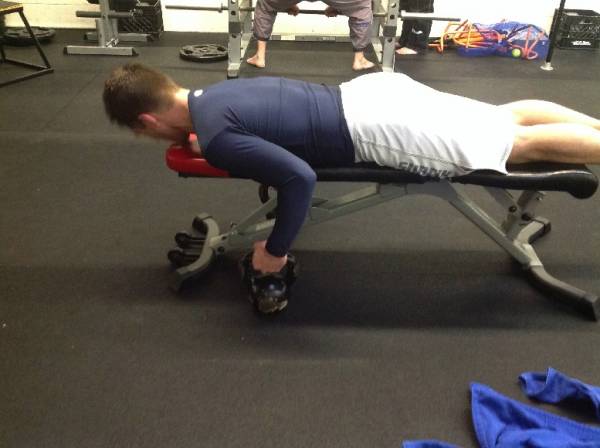
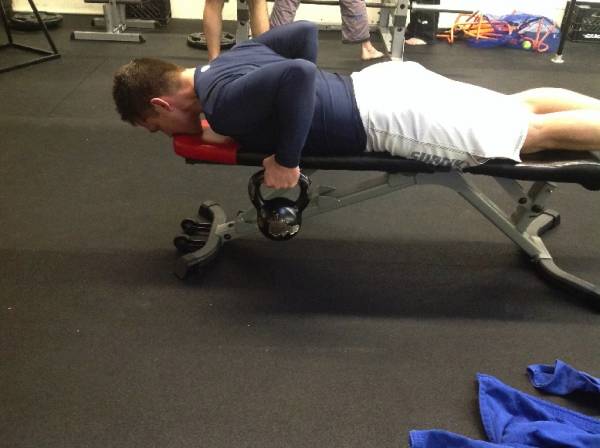
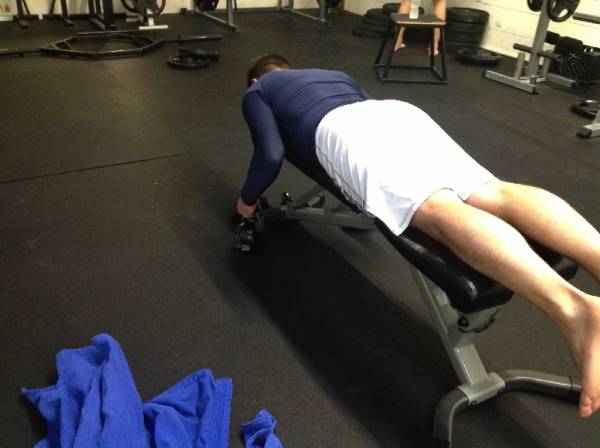
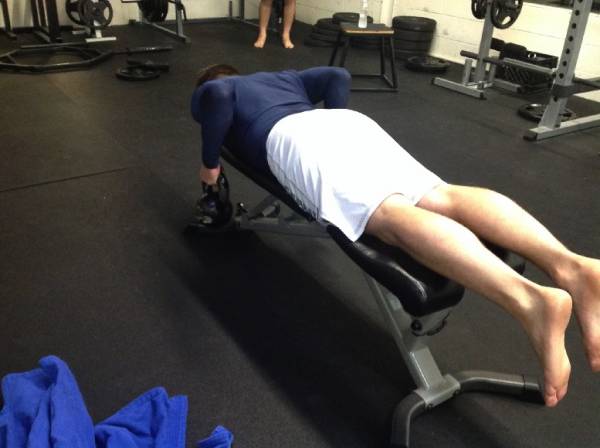
Quadruped, 3 sets 5 repetitions each side:
- Start on the ground on your hands and knees.
- Take one hand and place it behind your head.
- Try to touch your elbow to the opposite arm.
- Return to the starting position, then try to open up your chest a little more to the sky.
- It is important to remember to breath.
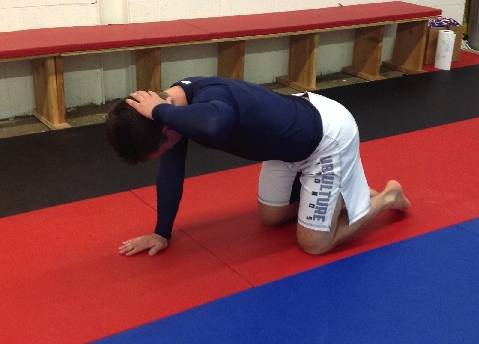
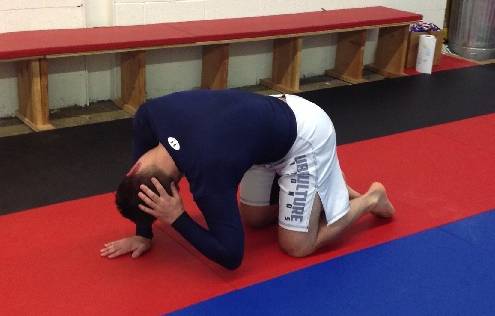
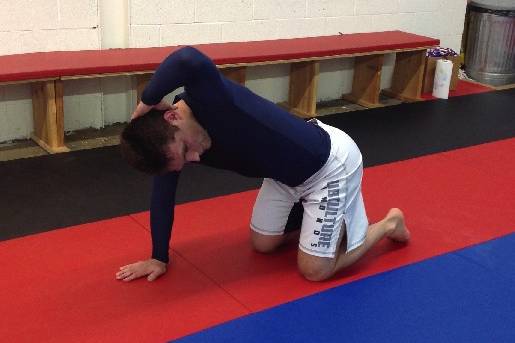
It’s the finals of the biggest tournament you have ever done. The score is tied with thirty seconds left. Your team is yelling at the top of their lungs to open and pass your opponent’s guard. This time things are different. You put in the time to work on your mobility. You stand up, successfully execute the open and pass, and take home the gold.
Photo 1 courtesy of Shutterstock.
Photo 2 courtesy of Ana Nieves.
All other photos by Samuel Spiegelman.






